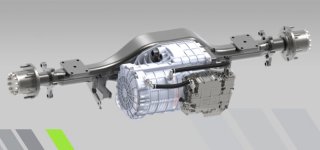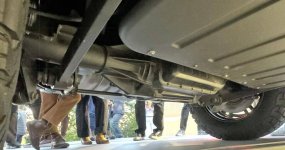If driving one sounds like driving an EV with a little gas generator running in it somewhere, that's 100% a deal killer.
I'm guessing it's kinda going to sound like that.
That's what it sounds like in the BMW i3 we owned, which is a similar principle.
Follow-up novel/rabbit trail:
That said, the i3 has a ~35hp generator. I don't know if they've said what the power is for the Scouts, but the Ramcharger has a normal ~3.7L V6 as the generator because 1) the average power usage is obviously WAY higher in a Ram, especially when towing, 2) it's what Stellantis has available, and 3) it's way more buffer for people who are stupid and show up at the bottom of a mountain with a dead battery and expect the engine to be the SOLE power source, which is not the right way to run a serial PHEV.
The *right* way to run a serial PHEV is to run the engine well BEFORE you need it, allowing it to keep the battery charged, giving you a power buffer when you need to pass or when the right-sized generator cannot handle a temporary additional load completely on it's own.
But people don't think ahead, and they think they can drive up a mountain at 75 mph with a 34hp generator with a dead battery, and when they can't, they sue BMW (yes, this is a real example).
So, now, Ram is offering a full-size engine, and a full-size battery (virtually the same size as the "standard range" F150 Lightning), but they're rating the battery at far lower range. Why? Because, I believe, they're holding back a BUNCH of battery for the people who show up at the bottom of a mountain with no battery at all, and want to drive 75mph up a mountain towing an 35' Airstream Classic so that stupid people don't have to do even the most basic thinking/planning, so they've hamstrung/deoptimized normal operation to be a buffer to protect against braindead usage.
That's my theory on the Ramcharger, anyway, but the point is generally true for any serial PHEV. Optimal design requires people to use their brain/plan to avoid unnecessarily oversizing the battery/engine, and that's what makes designing them hard, especially if people are going to push the envelope. You almost HAVE to substantially overdesign capability and block people from using it except in emergencies to keep people from getting in over their heads due to poor planning.
 www.autospies.com
www.autospies.com






